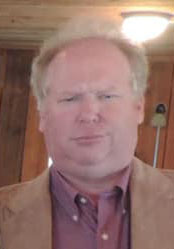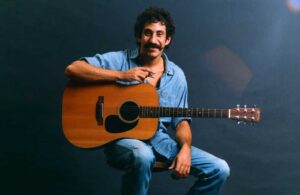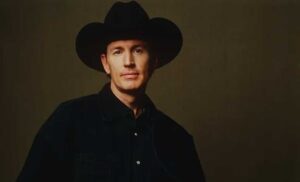“Grandma’s maiden name was Zona Villines….”
Hardcore Merle Haggard fans will remember the opening line of his 1972 single, “Grandma Harp.” The song rose all the way to No. 1 on the Billboard Country Charts.
By any musical standard, “Grandma Harp” is a short song. At just 2 minutes 18 seconds, there’s not enough time to reveal a whole lot about the life of the woman behind the song. It DOES tell us Grandma Harp lived at least 90 years (93, to be exact), and it insinuates she was the rock of Merle Haggard’s upbringing.
But what’s the rest of the story behind the song?
Well, if you’re ever driving Interstate 40 around Clarksville, Arkansas, and your dispatcher tells you to take Highway 21 to Harrison, you need to respond by questioning their sanity. While the route will take you through one of Arkansas’ most beautiful areas, it is the very definition of “Crooked and Steep” all the way. (In Arkansas Department of Transportation lingo, “Crooked and Steep” is only slightly better than “Impassable: Hairpin Turns Ahead.”
Either way, you’ll have a tough time navigating the road as it descends into Boxley Valley. The valley is within the Buffalo National River corridor and is preserved by the National Park Service as a historic and enduring agricultural area.
Boxley Valley is where Grandma Harp spent the first 30 years of her life. Her family scratched out a living in the 5-mile-long valley, which connects Boxley, Arkansas, with Ponca, Arkansas. Neither town makes much of a dent in the map, but the area is home to Arkansas’ elk herd, which makes it a popular tourist destination today.
Back in 1875, when Martha Francis Arizona Belle Villines (later Harp), affectionately known as “Zona,” was born to Hosea and Patty Villines, not many people visited the valley who weren’t native to the area. In fact, in the two cemeteries at each end of Boxley Valley, hundreds of headstones engraved with the name Villines are testament to the family’s role in the valley’s evolution.
The communities were close knit; in fact, Zona’s long name came from visitors her family received on the day she was born.
Zona’s parents wanted all seven of their children to succeed. In late 19th-century Newton County, success meant living in a log cabin and operating a subsistence farm. There wasn’t a whole lot to spend money on in Boxley Valley, and the nearest town of any substance was Harrison, 25 miles away. Those living in the valley normally traveled to Harrison by wagon, pulled by a team of mules along a crooked, steep and rocky road.
Zona was the oldest of the children, closely followed by Cynthia, born just two years later. As the girls matured, they wanted a taste of Boxley Valley’s form of success. But Zona’s parents weren’t going to let their daughters off easy.
When the girls got it into their heads that independence meant a separate home from the rest of the family, their dad began marking two trees every day. It was the girls’ job to cut the trees to the ground (using an axe) before the day was out. This process went on until the two had enough timber to build a log cabin.
By this time, Zona and Cynthia were so good at chopping down trees, they soon decided to add a second story, a luxury at the time.
In 1901, as Haggard’s song tells it, Zona Villines married a fellow by the name of James Harp, a “city slicker” from Harrison (which, at the time, had a population of about 1,500).
Rumor had it that he was attracted to Zona because of her log cabin. By 1902, the couple had their first child, Flossie. Records state that Flossie traveled with her family to California by wagon in 1906 — but by 1910, the family had migrated back east and lived in Beck, Oklahoma.
Flossie married James Haggard in 1919 in Checotah, Oklahoma. The couple and their family, including Grandma Harp, traveled back to California during the Great Depression.
The Harps settled near Bakersfield, California, a city that became known for its unique brand of country music, the “Bakersfield Sound.” Wynn Stewart pioneered the sub-genre of country music, followed by Buck Owens, who perfected it.
It wouldn’t be long before Zona Harp’s grandson became one of the premier Bakersfield Sound artists and among the most successful country artists of all time. Merle Haggard was born to Flossie and James in 1937.
In California, the Haggard family grew up in a converted railroad boxcar. Their father being an auto mechanic, Merle and his three siblings didn’t grow up with much, but he always credited Grandma Harp with helping to keep the family together.
In an introduction to the song “Grandma Harp” he once offered during an interview, Haggard said:
“I guess the thing I remember most about Grandma was her pretty blue eyes and trembling hands as she served the best baked apple pie that I’d ever ate. It always amazed me how, to the age of 75 years, she personally raised her own black-eyed peas and turnip greens that the old corner market just couldn’t match. One day, the old summer sun just got too much for her and she fell and broke her hip. After that she seemed to slow down for a while, but bless her heart, she lived to be 93. It was like she’d lived to see a thousand years of progress. The horseless carriage, two world wars, the first man walk on the moon. The times in which she lived were not what mattered. It was how she lived it. And that made it all worthwhile.”
Grandma Harp lived until 1972, when she died in Bakersfield.
It’s a shame she never made her way back to Boxley Valley, where she could have been laid to rest with her family and many close relatives. But that’s the way it was for so many Arkies and Okies who headed out to the west coast during the Dust Bowl years, never to return.
Fortunately, Merle Haggard took the time to immortalize his grandmother in song, if for no other reason than “just to write a song for Grandma Harp.”
Until next time, pay attention to those crooked, steep roads — and if there are impassable hairpin turns ahead, go no farther!
Photo courtesy of MerleHaggard.com
Since retiring from a career as an outdoor recreation professional from the State of Arkansas, Kris Rutherford has worked as a freelance writer and, with his wife, owns and publishes a small Northeast Texas newspaper, The Roxton Progress. Kris has worked as a ghostwriter and editor and has authored seven books of his own. He became interested in the trucking industry as a child in the 1970s when his family traveled the interstates twice a year between their home in Maine and their native Texas. He has been a classic country music enthusiast since the age of nine when he developed a special interest in trucking songs.














Well Kris you have a few incorrect details in your article of the Haggard and Harp family. Other than that a good article.
I really enjoyed the article I have read it twice now and I love the song of Grandma Harp. And Merle is my all time favorite.